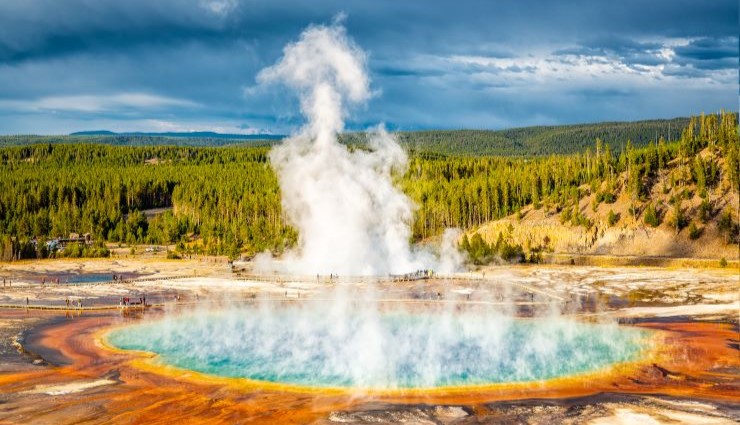In which part of the world was the oldest civilization formed? The truth is that researchers do not know the definitive answer to this question, and based on the remains, they only guess where the oldest culture in the world was. In this article, we introduce ten ancient civilizations whose existence has been proven; then, we name some examples of societies that, although they are not included in the category of civilizations, were advanced and had their own culture. Perhaps the oldest civilization in the world was one of these societies, and we have not found enough evidence to prove it.
10. Inca civilization
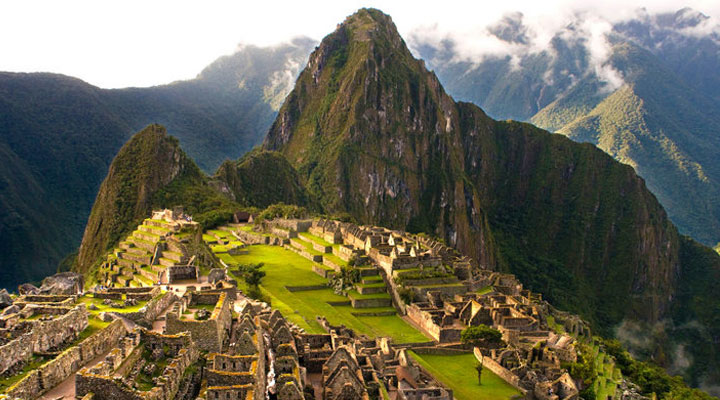
Period: from 1438 to 1532 AD
Geographical region: South America
Current location: Peru, Ecuador, Chile
This civilization was formed in South America, a region that now includes the three countries of Peru, Ecuador, and Chile, and is located in the neighborhood of Brazil. The Incas’ administrative, military, and political center was the city of Cuzco, which is now a part of the province.
The Incas failed to invent the line and used symbols and images instead. However, they had significant achievements, such as:
- Building paved roads in rough terrain to connect cities;
- Inventing a kind of mathematical system for accounting;
- Incredible progress in agriculture and architecture.
Machu Picchu is an example of the unique architecture of the Incas, which is considered the best monument of the Incas for travel and tourism lovers.
Eventually, smallpox and other diseases that the Spanish brought to South America caused heavy losses to the Incas and the fall of their empire.
9. Aztec civilization
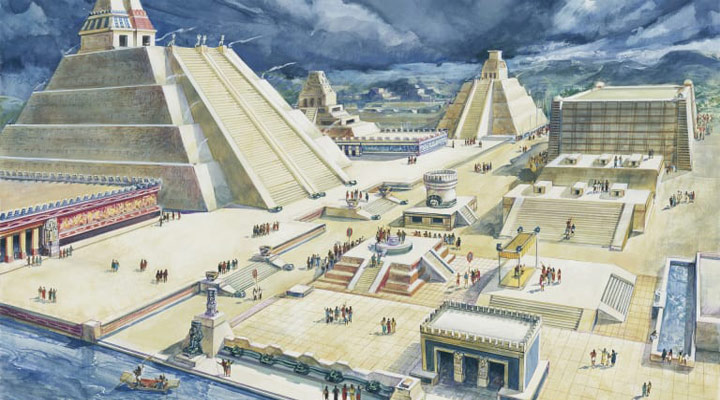
Period: from 1345 to 1521 AD
Geographical region: Central America
Current location: Mexico
The Aztec civilization peaked in Mexico when the Incas had just claimed power in South America. The Aztec culture is called the Triple Alliance because it was formed by the union of 3 cities, Tenochtitlan, Tetsoko, and Tlacupan, which were once fierce rivals.
The goal of this alliance was to dominate the Valley of Mexico region, which was accomplished thanks to Tenochtitlan, the Aztec military city. Of course, the Aztec emperor did not rule over each conquered town and territory, but the local rulers were obliged to pay tribute to the Triple Alliance.
The Aztecs were at the height of their power when the Spanish arrived. Under the leadership of Hernán Cortés and with the help of the local enemies of the Aztecs, they overthrew this civilization so that Spain took over Mexico.
8. Ancient Roman civilization
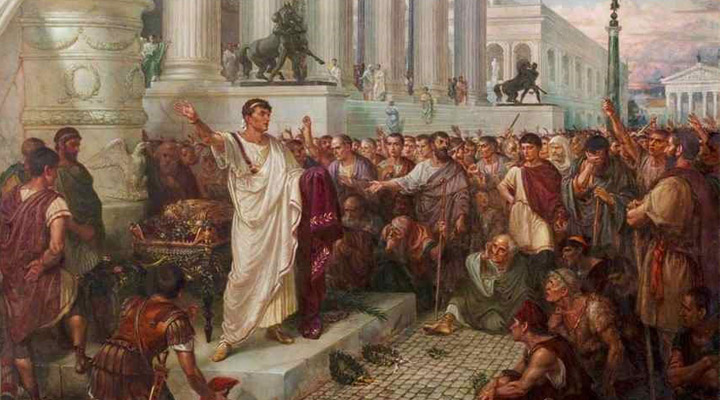
Period: from 550 BC to 465 AD
Geographical region: Europe
Current location: Italy
Ancient Roman civilization was formed almost six centuries before Christ, and the story of its formation is mixed with legends. At the height of its power, the Roman Empire covered a wide area, including the Mediterranean countries and a part of modern Turkey.
Some of the world’s greatest rulers, such as Julius Caesar, Trajan, and Augustus, were Roman emperors. Still, after the reign of the 7 Kings, the people took over the administration of their country and established the Senate to rule. After that, the name of the Roman Empire was changed to the Roman Republic.
Eventually, Roman civilization collapsed with the influx of millions of barbarians from northern and eastern Europe.
7. Persian civilization
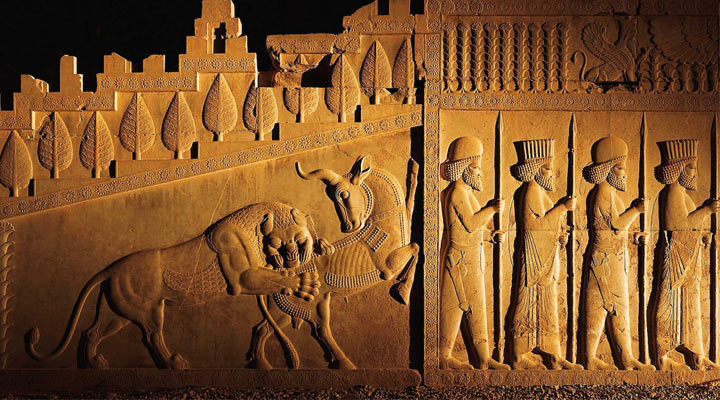
Period: from 550 to 331 BC
Geographical area: from Egypt in the west to the Indus River in the east
Current location: Iran
Indeed, the Achaemenid Empire was not the oldest civilization in the world. Still, it was once considered the most powerful empire in the world, and all of us Iranians are proud of its greatness and glory.
The Achaemenid Empire was famous for its unparalleled military power and wise rulers. These two factors caused the territory of this government to expand from Egypt in the west to parts of India in the east for 200 years.
Before the formation of this great civilization, Iran was divided between local rulers. When Cyrus the Great came to power, he unified and unified Iran and then proceeded to conquer Babylon. This expansion of the country continued even after the death of Cyrus until 300 years before Christ, Alexander the Great, invaded Iran and ended the Persian civilization.
6. Ancient Greek civilization
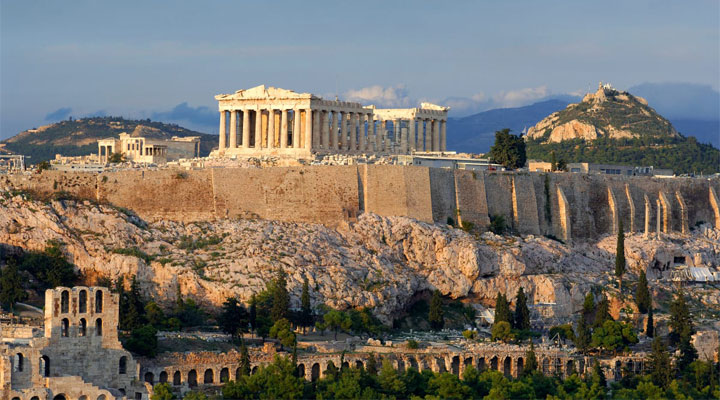
Period: from 2700 to 479 BC
Geographical area: parts of Europe and North Africa
Current location: Greece
Although ancient Greece is not considered the oldest civilization in the world, it was a significant and influential civilization that introduced concepts such as democracy and the Olympics to the world.
This civilization lasted for about 2,500 years, so long that historians had to divide it into several different periods. The most famous periods are the ancient, classical, and Hellenic periods.
Some of the important actions of the Greeks were:
- The Invention of the Olympic Games;
- Introducing the concept of democracy and the Senate;
- The foundation of geometry and biology, and physics.
5. Ancient Chinese civilization
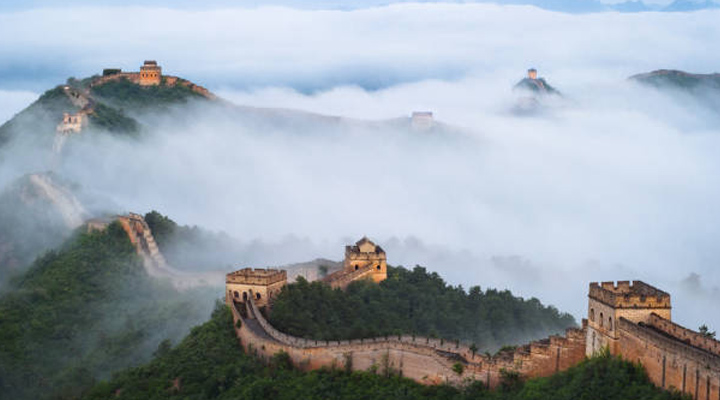
Period: from 1600 to 1046 BC
Geographical area: the size of the Yellow River and the Yangtze River
Current location: China
The ancient Chinese civilization, also called the Han Empire, was formed in an area surrounded by the Pacific Ocean and natural features such as the Himalayas and the Gobi Desert. Therefore, it was spared from the invasion of foreigners for centuries and flourished well. The Yellow River and the Yangtze River, the longest rivers in the world, also played an essential role in the prosperity of this civilization.
Some of the significant achievements of this civilization are:
- the discovery of gunpowder and the making of war cannons;
- making paper and inventing printing techniques;
- The invention of the compass.
4. Mayan civilization

Period: from 2600 to 900 AD
Geographical region: Central America
Current location: Mexico, Guatemala, El Salvador
One of the reasons for the fame of the Mayan civilization is its unique astronomy. The Mayans invented their script 700 years before Christ and used it to record their stone calendars. The Maya civilization was more prosperous than its contemporaries. At one point in history, their population reached 19 million people, and they built stone pyramids that were taller than the Egyptian pyramids.
The sudden decline of the Maya civilization is one of the mysteries of history that no one has yet solved.
3. Ancient Egyptian civilization

Period: from 3150 to 30 BC
Geographical area: the banks of the Nile River
Current location: Egypt
Ancient Egypt is not the oldest civilization in the world, but it has a unique age and cultural richness and has left us one of the world’s seven wonders. According to historians, Egyptian civilization was formed 3150 years before Christ in North Africa, with the union of Lower Egypt and Upper Egypt to be ruled by the first pharaoh.
Ancient Egyptians made significant progress in agriculture and medicine, and their architecture and sculpture became world-famous. Hieroglyphs and papyrus are also relics of this ancient civilization.
Finally, Alexander the Great put an end to this great civilization.
2. Indus Valley Civilization

Period: from 3300 to 1900 BC
Geographical region: the banks of the Indus River
Current location: India, Pakistan, Afghanistan
This civilization started in today’s area, including Pakistan, northeastern Afghanistan, and northwestern India. It can be said that the culture of the Indus Valley shares the position of the oldest civilization in the world with the culture of ancient Egypt and Mesopotamia. However, the difference was that it was much broader than theirs.
Unlike other civilizations, this civilization seems to have been spared from war. Some believe that the reason for the destruction of the Indus Valley civilization was the migration caused by climate change.
1. Mesopotamian civilization

Period: from 3500 to 500 BC
Geographical region: West Asia
Current location: Iraq, Syria, Turkey
Mesopotamia is usually considered the oldest civilization in the world because there is no evidence that an older civilization exists. “Mediterranean” is an Arabic word meaning “between two rivers” because the Sumerians formed this civilization between the Tigris and Euphrates rivers.
The Sumerians were the first to trade and develop industries such as weaving, leatherwork, metalwork, and pottery. The invention of the wheel is considered the most important achievement of this civilization.
Cyrus the Great’s conquest of the country, ended this civilization and made it a part of Persian civilization.
Advanced societies before the Mesopotamian civilization
Humans started farming and taming animals almost 8000 years before Christ. These people who had settled in one place also created works of art, but they were considered part of their culture and did not mean the emergence of civilization. In the following, we introduce some of these advanced societies that researchers believe there is not enough evidence to call civilizations. Of course, this article also calls them civilization, as expected.
4. Norte Chico Civilization

Period: from 4000 to 1800 BC
Geographical region: South America
Current location: Peru
These people were unfamiliar with pottery because archaeologists had not discovered any artwork of this civilization. Of course, the architectures of this civilization are fascinating.
3. Civilization of Ain Ghazal

Period: from 7200 to 5000 BC.
Geographical region: Asia
Current location: Jordan, Oman
Ain Ghazal is considered one of the early societies whose people are famous for making the first human sculptures. These statues, made of plaster and before the invention of pottery, were discovered in Jordan and Oman.
2. Çatalhöyük civilization

Period: from 7500 to 5700 BC
Geographical region: Southern Anatolia
Current location: Turkey
Çatalhöyük is the oldest well-preserved Neolithic city. It is said that this society’s people were the first to settle down.
1. Aborigines of Australia

Period: from 50,000 years ago until now.
Geographical region: Australia
Current location: Australia
Although the Mesopotamian civilization is often considered the oldest civilization in the world, according to new research, the aborigines of Australia have been considered the oldest civilization in the world. The oldest human structure is a trap for trapping fish, which is at least 40,000 years old, and its construction has been attributed to the Australian aborigines.
final word
When we read a history book, we realize what a winding path human civilization has traveled until our present world has become like this, a world that owes a lot to previous cultures.
Which of these civilizations is more attractive to you? Would you like to write us your opinion and feelings about ancient Iranian civilization? Do you think the societies we introduced in the last part of the article should be considered civilizations or not? We will wait for your valuable comments.


